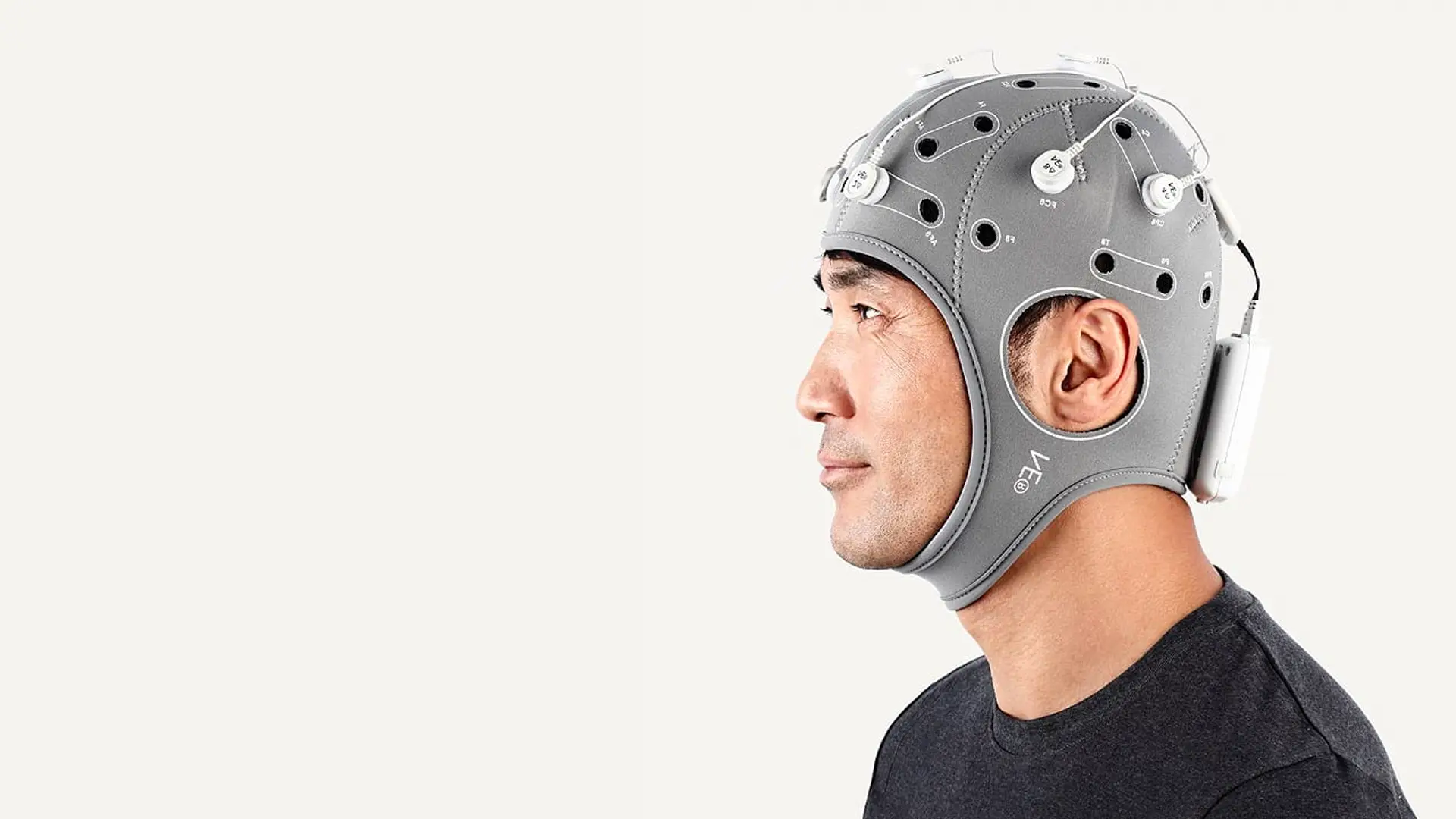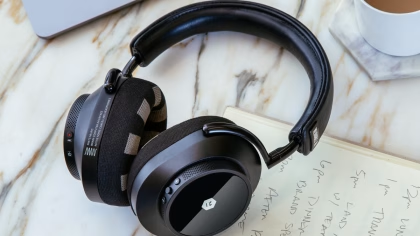Environmental ergonomics optimizes spaces for well-being, and biosensors like eye tracking, EEG, and skin conductance offer powerful tools for this purpose. iMotions’ platform integrates these technologies to provide insights into visual attention, cognitive load, and emotional states, enabling data-driven design that enhances comfort, efficiency, and overall user experience.
Table of Contents
Introduction to Environmental Ergonomics
Imagine walking into an office where the chairs are stiff and unadjustable, the lighting is harsh and glaring, the noise from conversations and office equipment is overwhelming, and there’s a suspiciously strong biological smell permeating from the staff kitchen.
Now, contrast that with a workspace where chairs support your back perfectly, the lighting is soft and adjustable, the noise levels are controlled to ensure a peaceful working environment, and a pleasant scent of almond blossom wafts through the air. Oh, and the temperature is just right! The difference in these two scenarios is stark and highlights a critical factor that often goes unnoticed: the role of environmental ergonomics.

What is Environmental Ergonomics?
Environmental ergonomics, a subcategory of human factors engineering, is the science of designing environments that fit the physical and cognitive abilities, as well as the mental and physical well-being of human beings. Its goal is to optimize well-being and performance by creating spaces that enhance comfort, efficiency, and safety. In today’s world, where people spend most of their time between their workplaces and homes, the importance of ergonomic design in both those places, and beyond, cannot be overstated.
The Profound Impact of Environmental Ergonomics on Behavior
All built environments, or spaces, are either conducive to physical and cognitive well-being, or they are not. That is why the impact of environmental ergonomics on human behavior is profound. From the way we work and interact with others to our overall health and mental well-being, the environments we inhabit shape our behaviors in subtle yet powerful ways.
For instance, a well-designed office can boost productivity and reduce fatigue, while a poorly designed one can lead to discomfort and decreased performance. Similarly, a classroom with ergonomic furniture and proper lighting can enhance learning, whereas one that neglects these aspects can hinder students’ focus and engagement.
Enhancing Productivity and Efficiency through Ergonomic Design
The design of an environment plays a critical role in shaping productivity and efficiency. By focusing on the physical and cognitive needs of individuals, ergonomic design can significantly enhance productivity and efficiency in various settings, from offices and factories to schools and hospitals.

Key Principles of Environmental Ergonomics
- Anthropometry: Designing spaces and objects that accommodate the physical dimensions of the human body.
- Biomechanics: Understanding the mechanical aspects of human movement to reduce physical strain and prevent injuries.
- Cognitive Ergonomics: Reducing cognitive load and enhancing the usability of tools and interfaces to improve efficiency and reduce errors.
- Workplace Design: Minimizing unnecessary movements, reducing clutter, and ensuring that tools and materials are within easy reach.
- Environmental Factors: Optimizing lighting, temperature, noise, and air quality to support physical and mental well-being.
Behavioral and Psychological Effects
The environments we inhabit significantly influence our behavior and psychological state. From boosting motivation and morale to influencing social interactions and mental well-being, ergonomic design can have profound impacts on how we feel and act in different settings.
Motivation and Morale
Ergonomically designed environments that prioritize comfort can greatly enhance satisfaction and motivation. When individuals feel physically comfortable, they are more likely to experience positive emotions and a greater sense of well-being.
- Enhanced Comfort and Satisfaction: Ergonomic seating and furniture that support good posture can prevent discomfort and pain, leading to increased satisfaction and a willingness to engage in tasks.
- Reduced Fatigue and Stress: Ergonomic environments that minimize physical and mental fatigue can improve overall energy levels and reduce stress, further enhancing motivation.
Social Interaction
Ergonomically designed environments that facilitate social interaction can enhance teamwork and communication, leading to more effective collaboration and a positive workplace culture.
- Collaborative Spaces: Open plan offices with strategically placed collaborative zones encourage spontaneous interactions and idea sharing.
- Privacy and Focus: Having spaces that allow for privacy and focused work is equally crucial. Designating quiet zones where individuals can focus without distractions helps reduce stress and improve work quality.

Mental Well-being
Environments designed to reduce stress can have a significant impact on mental well-being. Ergonomic principles help create spaces that support relaxation and reduce anxiety.
- Stress Reduction: Incorporating natural elements such as plants, natural light, and outdoor views can create a calming atmosphere.
- Cognitive Load Management: Simplified layouts and ergonomic tools and interfaces reduce cognitive effort, preventing mental fatigue and enhancing cognitive performance.
Enhancing Environmental Ergonomics with Biosensors
How can we effectively analyze and implement changes to improve environmental ergonomics? Technology offers powerful tools to optimize spaces for mental and physical well-being. iMotions has developed a comprehensive software platform for human behavior research, integrating various biosensors such as eye tracking, EEG (electroencephalography), and skin conductance.
These technologies provide deep insights into how people interact with their environments, allowing us to design and renovate spaces that are truly ergonomic and supportive of human well-being.
Eye Tracking: Understanding Visual Attention
Eye tracking technology measures where and how long a person looks at different elements within an environment. This analysis offers valuable insights into visual attention, cognitive load, and overall user experience.
- Visual Attention: Identify which areas of a space capture attention and which are ignored. In an office setting, understanding visual attention can guide the placement of important information, signage, and tools for optimal visibility.
- Cognitive Load: Assess the cognitive effort required to navigate and interact with a space. High cognitive load indicates overly complex or confusing designs. Simplifying layouts and improving wayfinding can reduce cognitive strain and enhance comfort.
- Usability Testing: Eye tracking allows precise usability testing of new designs. Observing user interactions with different elements helps iteratively refine layouts to improve functionality and ease of use.
EEG: Insights into Cognitive and Emotional States
EEG measures electrical activity in the brain, providing insights into cognitive and emotional states. This data is invaluable for understanding how different environments affect mental well-being.
- Stress and Relaxation: Identify brainwave patterns associated with stress and relaxation. By analyzing these patterns, designers can identify stressors and implement changes that promote relaxation, such as introducing natural elements, optimizing lighting, and improving acoustics.
- Cognitive Engagement: Measure cognitive engagement and mental workload. Environments supporting focused work without causing cognitive overload are ideal for productivity. Testing design elements with EEG helps create spaces that support sustained cognitive engagement.
- Mood and Emotional Response: Reveal emotional responses to different environments. Positive emotional responses are linked to higher satisfaction and well-being. Designing spaces that evoke positive emotions through aesthetic elements and comfortable furniture enhances overall user experience.

Browse full range of EEG headsets
- EEG headsets from Neuroelectrics, ABM and Brain Products
- Get technical support and guidance in choosing the right equipment
- Full compatibility with iMotions for multimodal research
Skin Conductance: Gauging Emotional Arousal
Skin conductance, or galvanic skin response (GSR), measures changes in the skin’s electrical conductance due to sweat gland activity, which is linked to emotional arousal.
- Stress Indicators: High skin conductance levels indicate heightened emotional arousal, often associated with stress. Monitoring these levels helps identify and mitigate stress-inducing factors, such as reducing clutter, managing noise levels, and incorporating calming colors.
- Arousal and Engagement: Gauge levels of engagement and arousal. Environments that maintain optimal arousal levels without causing overstimulation are crucial for well-being. Designing spaces that balance stimulation and relaxation can enhance overall comfort and productivity.
Free 36-page EDA/GSR Guide
For Beginners and Intermediates
- Get a thorough understanding of all aspects
- Valuable GSR research insights
- Learn how to take your research to the next level

Integrating Biosensor Data in Design
Using iMotions to integrate data from eye tracking, EEG, and skin conductance allows designers to take a data-driven approach to environmental ergonomics. Here’s how this integration can be applied in practice:
- Pre-Design Assessment: Conduct studies using biosensors to gather baseline data on how existing spaces affect users. Identify areas causing stress, cognitive overload, or discomfort.
- Design Iteration: Use biosensor data to test and refine design prototypes. Adjust lighting, layout, and acoustics based on eye tracking and EEG feedback to create more comfortable and engaging environments.
- Post-Implementation Evaluation: After implementing design changes, use biosensors to evaluate their effectiveness. Compare pre- and post-renovation data to ensure the new environment enhances mental and physical well-being.
- Continuous Improvement: Incorporate ongoing monitoring with biosensors to continuously improve and adapt spaces based on real-time user feedback, ensuring environments remain supportive and ergonomic as needs and technologies evolve.
Real-World Applications
- Workspaces: Companies can use biosensors to design offices that maximize productivity and well-being. Eye trackers can optimizes monitor placement and lighting, EEG can help create focus zones free from distractions, and skin conductance can assist in designing break areas that promote relaxation.
- Healthcare Facilities: Hospitals and clinics can employ these technologies to create environments that reduce stress for patients and staff. EEG and skin conductance data help design calming patient rooms and efficient workspaces for healthcare providers.
- Educational Institutions: Schools and universities can use biosensor data to create classrooms and study areas that enhance learning and reduce stress. Eye tracking helps arrange seating and displays for optimal visibility, while EEG and skin conductance ensure environments support cognitive engagement and emotional well-being.
By leveraging the power of iMotions and biosensors such as eye tracking, EEG, and skin conductance, we can create environments that truly promote mental and physical well-being. These technologies provide precise, actionable insights that guide the design and renovation of spaces, ensuring they are ergonomic, comfortable, and supportive of human needs. As we continue to integrate these advanced tools into our design processes, we move closer to creating environments that not only meet but exceed user expectations, fostering healthier and more productive lives.
iMotions Ergonomics Research Lab
Synchronize data collection from multiple biosensors, allowing researchers to investigate complex research questions in innovative and time saving ways.












